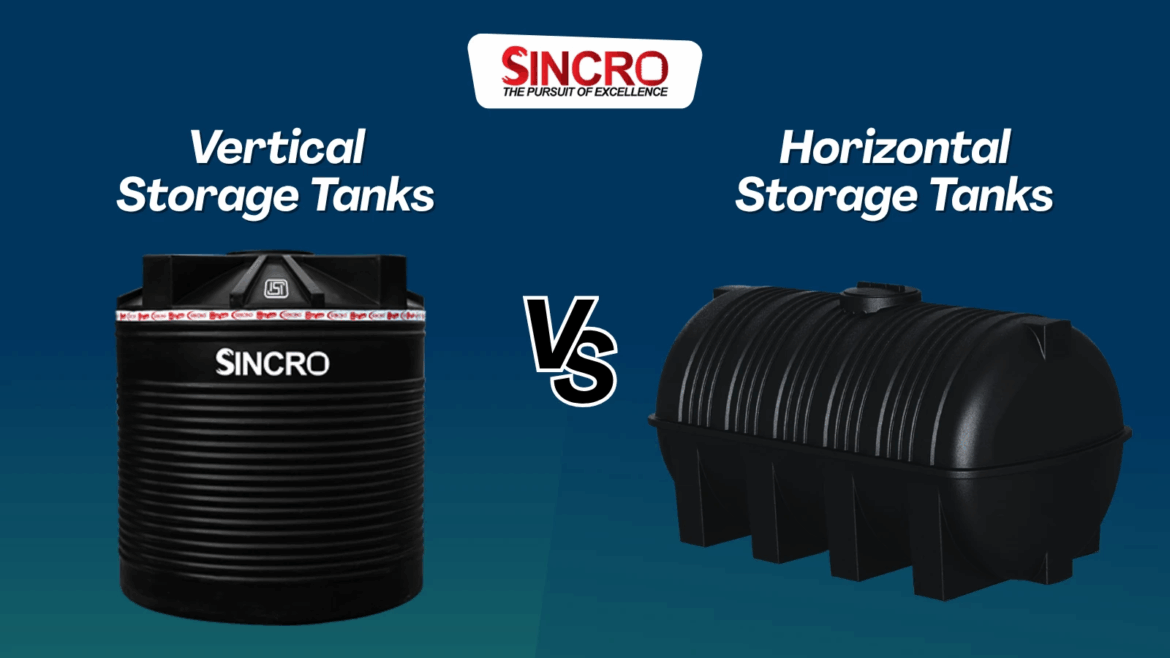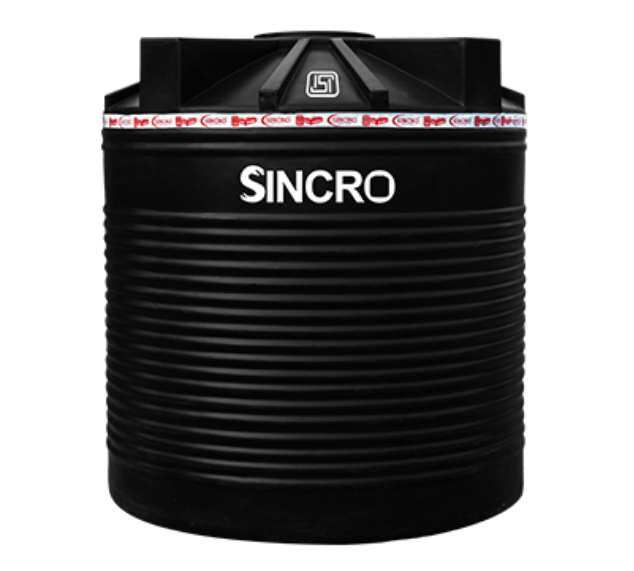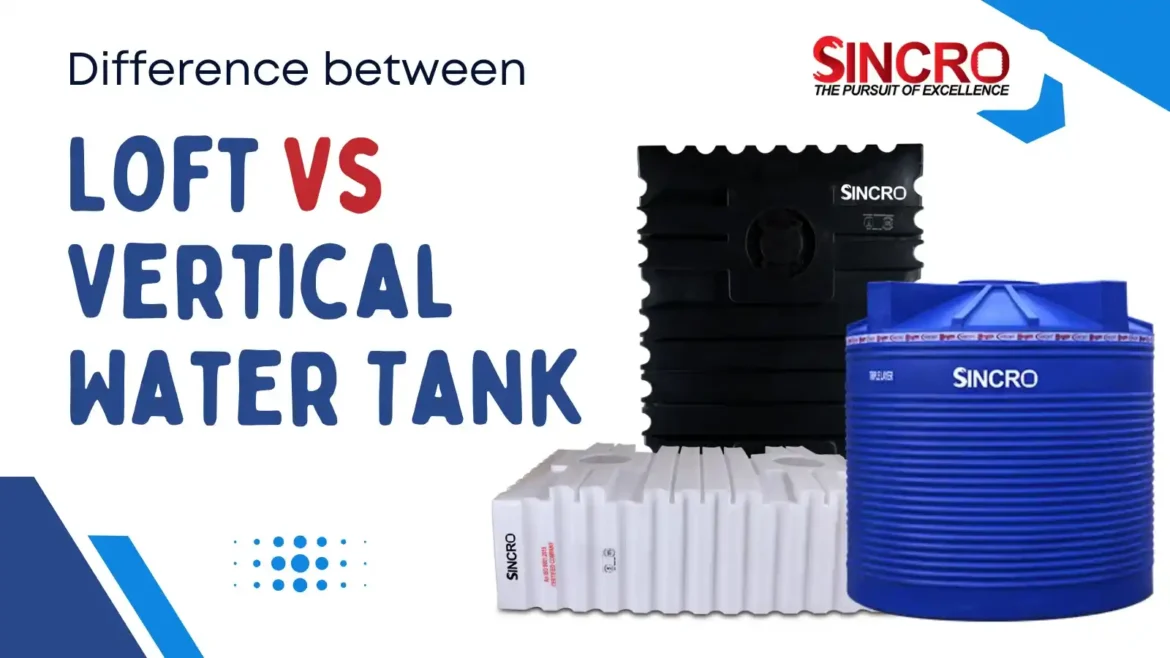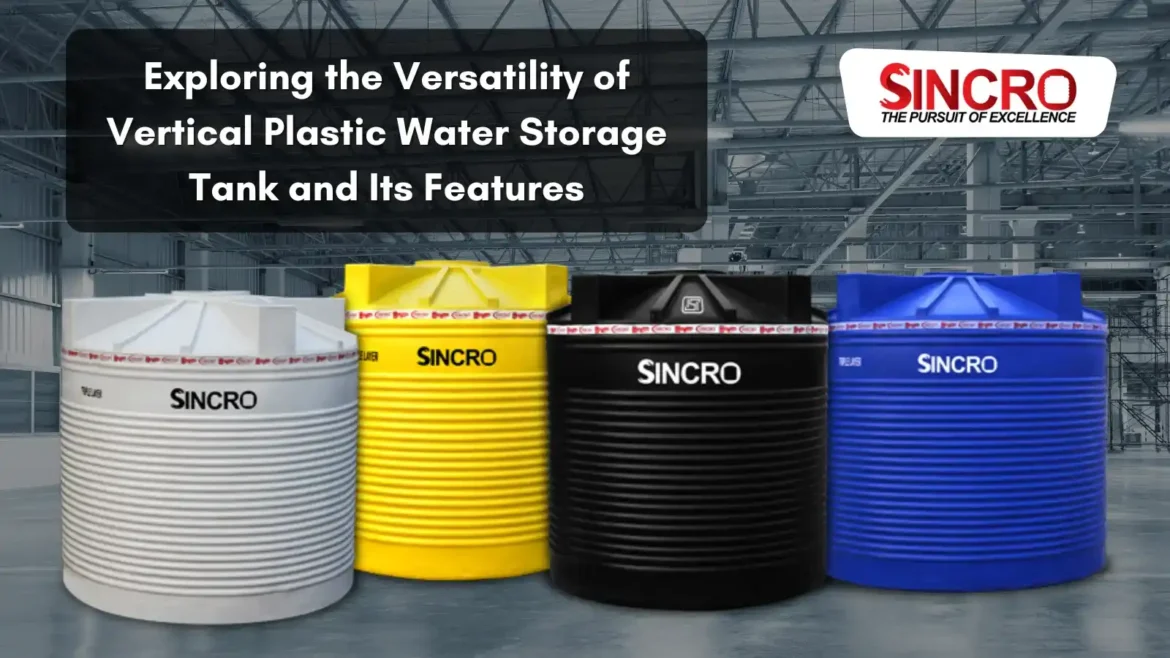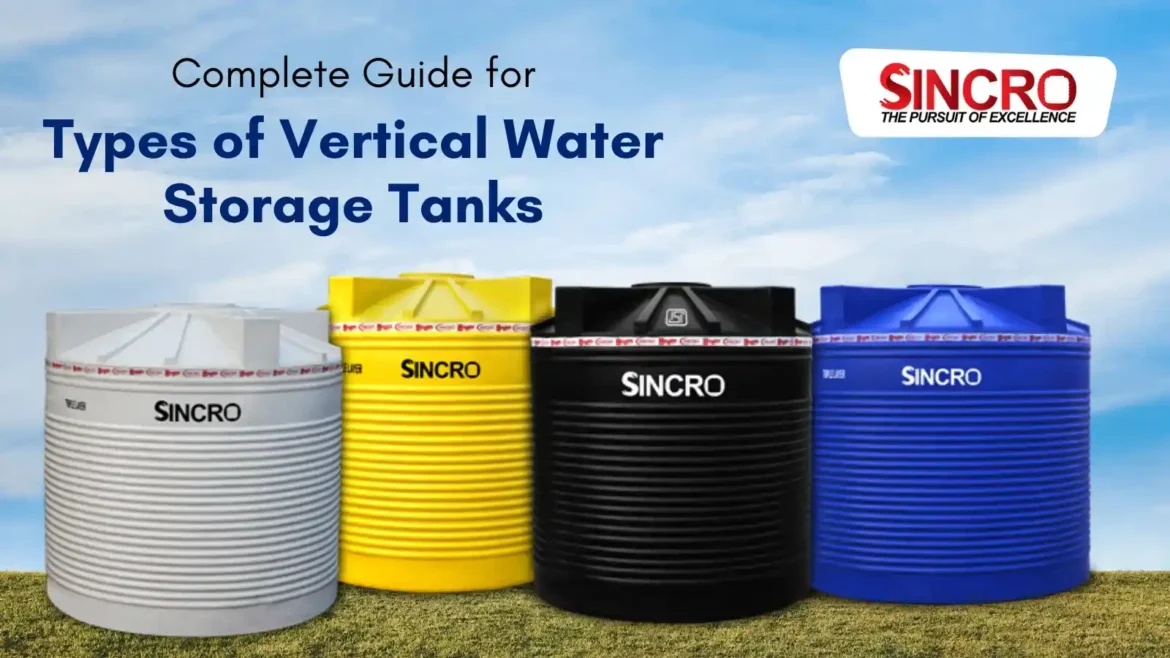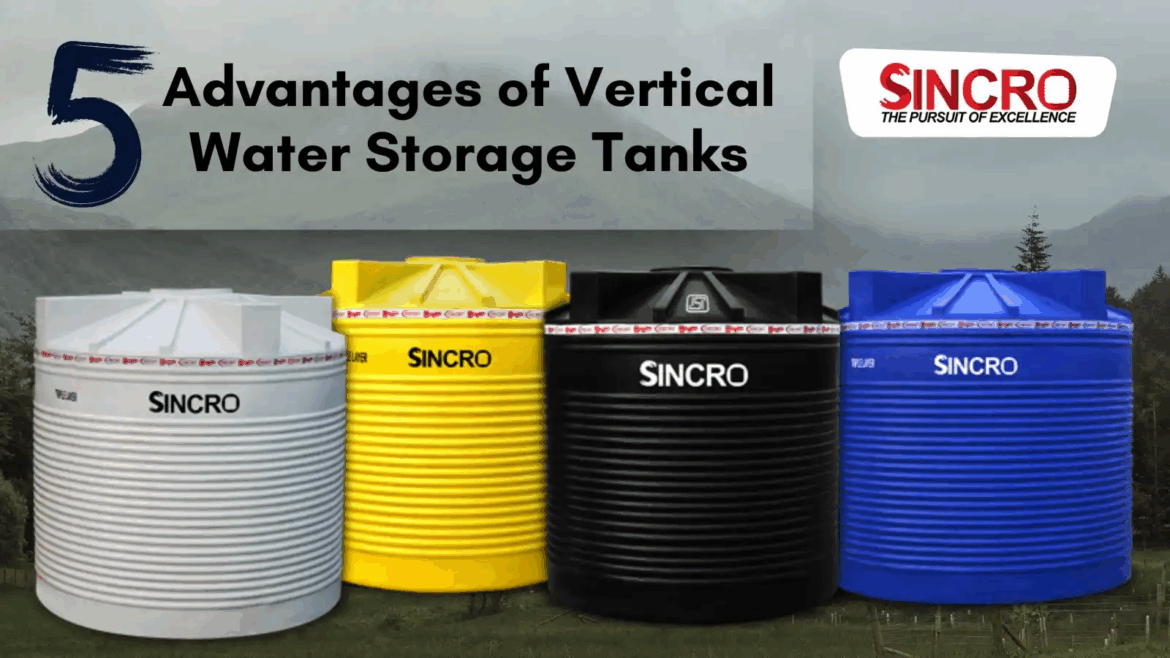When it comes to storing liquids, especially water, there can be significant implications in choosing between vertical tanks and horizontal tanks, due to considerations such as space footprint, expense, maintenance, and operational ramifications. This is no easy decision, regardless of whether you are situated in Mumbai or some other location on Earth.
Let’s dive into a comparison, and then look at how Sincro, a trusted manufacturer, fits into the picture.
What is a Vertical Storage Tank?
Vertical tanks refer to cylindrical containers used for storage that are oriented in an upright position. They as effective for use when footprint is a major consideration since the footprint is minimized. For water storage, vertical water tanks are very common – they are space-efficient, allow better sediment settlement, and can even boost water pressure due to their height.
Sincro, a company in Mumbai that produces a quality vertical water storage tank made of virgin food-grade plastic, which is UV-stabilized and designed to withstand the weather of India. Their tank catalogs show their vertical tanks come in various sizes and configurations.0
Advantages of Vertical Tanks
- Space-saving: Vertical tanks occupy less ground area, making them perfect for rooftops or tight urban spaces – especially in cities like Mumbai.
- Enhanced water pressure: Because of their height, vertical tanks can leverage gravity to provide better flow, reducing dependence on pumps.
- Better sediment settlement: Sediments settle more efficiently at the bottom in a vertical cylinder, keeping the upper water cleaner.
- Durability: Sincro vertical tanks are made of virgin food-grade LLDPE, are UV resistant, and are designed for a long life.
- Cost-effective: Due to their compact size, efficient manufacturing, and low maintenance, vertical tanks can often save you money in the long run.
Find out other advantages of Vertical Water Storage Tanks
What is a Horizontal Storage Tanks?
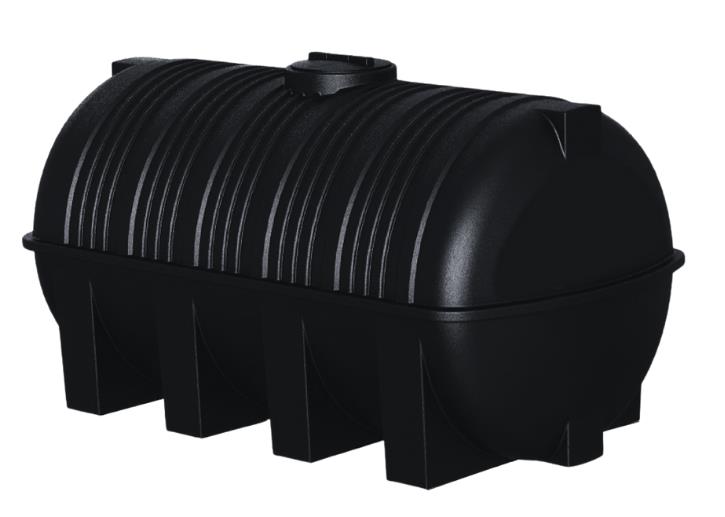
In contrast, horizontal tanks are arranged in a flat orientation. Horizontal tanks are generally shorter and wider in comparison to the height of a vertical tank in relation to their base. Horizontal tanks also have advantages and perform better in some situations.
Advantages of Horizontal Tanks
- Lower height requirement: If your installation area has height restrictions (for example, low ceilings), horizontal may be the best option.
- Stability: Because of their lower center of gravity, horizontal tanks are more stable, especially during transport or in seismic zones.
- Ease of transport: Horizontal tanks are easier to move on trucks, making them ideal when mobility is important.
- Temperature control (for certain liquids): In industries like brewing or dairy, horizontal stainless-steel tanks can heat or cool liquids more uniformly.
- Fewer supports needed: Horizontal storage tanks typically require fewer and less complex supports to handle and set up compared to vertical tanks.
Key Factors to Consider When Choosing
When determining if a vertical tank or a horizontal storage tank is right for you, it is important to consider:
- Space constraints: Are there height or floor-space limits?
- Type of liquid: Is it water, anything chemical, or will the liquid be stored at a certain temperature?
- Transportation and installation: Will you be moving it repeatedly, or will the installation be at a fixed location?
- Cost and materials: Vertical tanks may use less material and cost less to build.
- Maintenance: How often will the tank need cleaning? This will depend on how sediment builds up in the tank design.
- Wind or weather exposure: If you have taller tanks, you will need to have stronger foundations to protect your tanks in windy weather.
Why Choose Sincro for Vertical Water Storage Tanks in Mumbai?
Sincro is a well-known rotomoulding manufacturer based near Mumbai (Wada, Palghar district). Their vertical water storage tanks are:
- 100% made from virgin, food-grade LLDPE.
- UV-resistant, antibacterial, and ISI-certified.
- Available in different sizes, including triple-layer variants for extra protection.
- Ideal for residential, commercial, and industrial use.
Explore different types of vertical water storage tanks
Reach out to Sincro for their consultation.
FAQ
Q1: What is a vertical water tank and when should I use it?
A vertical water tank, simply put, is a cylinder above ground that stores water vertically and is designed to use up a minimum of ground space. A vertical tank is recommended if you have limited floor space, as in the case of rooftops, small plots, or height clearance in your area.
Q2: Do vertical tanks improve water pressure?
Yes. Since they are tall tanks and they are storing water at a height, it creates gravitational pressure, which can decrease or eliminate the necessity of pumping.
Q3: Are there hygiene benefits to vertical storage tanks?
Certainly. Sediment naturally collects at the bottom of a vertical cylinder, so the water at the top remains clearer for longer. Furthermore, Sincro tanks are made of food-grade materials for water safety.
Q4: When is a horizontal tank the preferred alternative?
Typically, you would prefer a horizontal tank if you deal with lower heights or if you need to move the tank frequently. Horizontal tanks are good for bulk storage and can be easily stabilized when installed in a horizontal configuration.
Q5: Is one type more cost-effective than the other?
In general, vertical tanks, due to their shape and simplicity, will use less material and will take up less footprint, which means they will be less expensive and easier to fabricate and maintain. Regardless, this will depend on your requirements for your space, what capacity you require, and if you choose to transport a tank.


